The Connection Between Creativity and Resilience
🌧️ Introduction: When Life Tests Your Flexibility
Creativity is not just about art or innovation — it’s the act of reimagining reality.
It’s what happens when the world changes faster than your plans — and you choose to adapt instead of collapse.
Resilience and creativity share the same psychological foundation: flexibility.
When you’re resilient, you bend without breaking.
When you’re creative, you see possibility where others see a wall.
In both, you reframe problems as opportunities.
The link between these two traits runs deep in neuroscience, psychology, and personal growth.
And understanding that link can transform how you approach stress, uncertainty, and recovery.
Let’s explore how creative thinking fuels emotional strength — and how resilience, in turn, unlocks deeper creativity.
Looking for supplements for This? Click here.
🧠 Part 1: The Shared Neuroscience of Creativity and Resilience
⚡ 1️⃣ The Brain’s Adaptive Network
Both creativity and resilience rely on your brain’s ability to adapt — a function called neuroplasticity.
When you face a problem, your brain builds new neural connections to handle it.
That’s exactly what happens when you brainstorm, paint, or solve a challenge.
Neuroscientists call this dynamic the default mode network (DMN) — the part of your brain active during introspection, imagination, and storytelling.
When you train creativity, you’re literally strengthening your brain’s capacity to imagine alternative outcomes — a skill essential for resilience.
Creativity is cognitive flexibility in action.
🧘 2️⃣ The Role of the Prefrontal Cortex
Your prefrontal cortex (PFC) manages problem-solving, emotional regulation, and future planning.
It’s the “CEO” of both resilience and creative thinking.
When you feel trapped or hopeless, it’s the PFC that helps you reframe the situation — to see not just what is, but what could be.
That mental reframe, called cognitive reappraisal, is a proven resilience skill.
It’s also the foundation of all creative innovation.
The same circuits used by artists to imagine a new song or design are used by resilient minds to rewrite their own story after trauma.
🧩 3️⃣ Dopamine and the “Reward of Possibility”
Dopamine — the neurotransmitter of curiosity and motivation — plays a central role in both creativity and resilience.
When you explore new ideas or recover from setbacks, dopamine spikes reinforce the feeling of progress.
That’s why creative acts (painting, journaling, music, problem-solving) can feel healing:
they give your brain micro-rewards for exploring new paths.
Resilient people unconsciously use dopamine to fuel optimism.
Creative people consciously use it to explore novelty.
Same neurochemical. Different expression.
🌿 Part 2: Creativity as a Tool for Emotional Regulation
When life gets hard, creativity gives your emotions somewhere to go.
It transforms chaos into coherence.
🖋️ 1️⃣ The “Meaning-Making” Process
Psychologists studying trauma recovery often find that resilient individuals engage in meaning-making — finding purpose through storytelling.
Creativity is storytelling at its core.
Whether through words, movement, or design, expressing your experience helps integrate pain into your identity instead of letting it fragment you.
Expression turns pain into perspective.
That’s why journaling, art therapy, and even creative problem-solving in business can all have therapeutic value.
They help your nervous system move from chaos → clarity → calm.
🎭 2️⃣ Emotional Alchemy
Emotions are energy.
If suppressed, they stagnate; if expressed creatively, they transform.
This is what Carl Jung called active imagination — a form of inner dialogue through art, symbols, or writing that helps regulate deep emotion.
In resilience terms, it’s emotional regulation through creation.
Anger becomes fuel for vision.
Sadness becomes empathy.
Fear becomes invention.
🎶 3️⃣ The Parasympathetic Reset
Creative engagement — painting, writing, music, dance — activates the parasympathetic nervous system, lowering heart rate and cortisol.
Your body literally calms while your mind expresses.
This makes creativity one of the most accessible natural tools for stress recovery — one supported by both psychology and physiology.
🌈 Part 3: Resilience as a Catalyst for Creative Growth
Just as creativity enhances resilience, resilience deepens creativity.
Challenges stretch you. They force you to innovate emotionally and mentally.
💥 1️⃣ Adversity Sparks Innovation
Studies on post-traumatic growth show that after major life challenges, many people experience a surge in creativity — they become more compassionate, introspective, and visionary.
Why?
Because suffering breaks mental rigidity.
When life dismantles your old assumptions, your mind must rebuild — often in more open, creative ways.
Adversity forces reinvention.
🌿 2️⃣ Emotional Resilience Unlocks Flow
Creative flow — that timeless, focused state where ideas move effortlessly — depends on safety and trust.
If you’re overwhelmed by fear or anxiety, you can’t reach it.
But if you’ve trained resilience — through mindfulness, breathwork, or self-regulation — your nervous system can enter flow more easily.
Resilience doesn’t just help you recover; it helps you create from a state of stability.
🧬 3️⃣ The Growth Mindset Loop
Resilient people adopt a growth mindset — seeing effort as progress, not failure.
Creative people use the same mindset to iterate through drafts, mistakes, and experiments.
Both thrive on feedback loops of curiosity, not perfectionism.
That’s why resilience training and creative training overlap — both teach you to view difficulty as data.
🧘 Part 4: How to Cultivate Creativity for Emotional Strength
You don’t have to be an artist to use creativity as resilience training.
You just need curiosity and consistency.
Here’s how to intentionally use creativity to strengthen emotional adaptability.
✍️ 1️⃣ Daily Freewriting
Set a timer for 10 minutes. Write whatever comes to mind — no censoring.
This exercise lowers self-judgment, increases cognitive flexibility, and helps integrate emotional tension.
Don’t aim for brilliance; aim for movement.
🎨 2️⃣ Make Something Imperfect
Perfectionism kills resilience.
Every time you allow imperfection — a messy sketch, an offbeat melody, a rough idea — you’re training your nervous system to tolerate uncertainty.
Resilient minds thrive in the unknown.
🧘 3️⃣ Use Movement as Expression
Dance, walk, stretch, or box while focusing on emotional release.
Physical creativity activates right-brain networks linked to emotional balance.
It also integrates body memory — where many forms of trauma and stress are stored.
📓 4️⃣ Keep a “Problem Journal”
Turn obstacles into design prompts:
“How could this be reimagined?”
This reframes frustration as innovation — teaching your brain that stress can be fuel, not threat.
Over time, this neural pattern rewires how you respond to challenges in every area of life.
💊 Part 5: Supplements and Habits That Support Creative Resilience
You can’t be creative or resilient if your brain is depleted.
Here are science-backed nutrients that optimize emotional flexibility and focus.
🌿 1️⃣ Magnesium (L-Threonate or Glycinate)
Supports calm alertness and neuroplasticity.
Improves focus, sleep, and recovery after intense creative or emotional work.
💊 200–400 mg/day.
🧠 2️⃣ Omega-3 Fatty Acids (EPA + DHA)
Essential for brain membrane fluidity — the physical basis of creativity and emotional adaptability.
💊 1–2 g/day combined EPA/DHA.
🌸 3️⃣ L-Theanine
Promotes alpha brain waves — the state linked to relaxed creativity and resilience under stress.
💊 200 mg/day.
🍄 4️⃣ Lion’s Mane Mushroom
Enhances BDNF (brain-derived neurotrophic factor), which supports neural growth — vital for learning and flexibility.
💊 500–1000 mg/day.
🌼 5️⃣ Adaptogens (Rhodiola, Ashwagandha, or Schisandra)
Balance cortisol, improve energy resilience, and support focus.
Rotate them every 8–12 weeks for optimal results.
🌙 6️⃣ Glycine and Reishi (for Creative Recovery)
Improve sleep depth and nervous system reset, allowing creativity to flourish again after intense mental effort.
💊 Glycine 3 g before bed + Reishi 1 g nightly.
Looking for supplements for This? Click here.
🧩 Part 6: The Creative-Resilient Routine
You can train creativity and resilience the same way you train muscle — through repetition and recovery.
Here’s a model daily routine:
| Time | Practice | Duration | Purpose |
|---|---|---|---|
| 🌅 Morning | Journaling or idea sketch | 10 min | Stimulates openness |
| ☀️ Midday | Focus block (no multitasking) | 90 min | Builds flow tolerance |
| 🌿 Afternoon | Light exercise or nature walk | 20–30 min | Calms stress loop |
| 🌇 Evening | Reflection or creative play | 15–20 min | Emotional integration |
| 🌙 Night | Magnesium + Glycine + wind-down | — | Nervous system reset |
🧠 Part 7: The Psychology of Creative Resilience
Psychologists define resilience as the capacity to adapt positively in the face of adversity.
Creativity is the act of imagining those positive adaptations.
🌺 1️⃣ Emotional Flexibility
Resilient people can feel fear or sadness without drowning in it.
Creative acts train this by transforming feelings into form — turning internal chaos into external clarity.
🔄 2️⃣ Openness to Experience
Creativity requires openness to the unknown.
So does resilience.
Both involve curiosity — an active state of “what else is possible?”
🪞 3️⃣ Self-Reflection and Meaning
Creative journaling and art strengthen metacognition — awareness of your own thoughts and emotions.
That self-awareness is the cornerstone of emotional regulation.
Resilient minds reflect, adjust, and reimagine.
🌿 Part 8: The Biology of Creative Recovery
Resilience isn’t constant strength; it’s rhythmic recovery.
When you create — even for a few minutes — you activate your body’s parasympathetic nervous system (rest and digest).
Cortisol drops, serotonin rises, and your body learns safety through expression.
That’s why burnout recovery often begins not with “doing less,” but with doing differently.
Instead of escaping stress, you transmute it.
Creativity becomes emotional medicine.
🧬 Part 9: Real-World Examples of Creative Resilience
Maya Angelou turned trauma into poetry that redefined identity and hope.
Stephen Hawking used creative problem-solving to transcend physical limits.
Frida Kahlo painted pain itself, transforming suffering into cultural symbolism.
Entrepreneurs and scientists regularly use creative reframing to adapt under uncertainty — the same skill set that builds resilience.
In each case, creativity wasn’t an escape — it was a mechanism for strength.
🌈 Part 10: Training Creative Resilience in Daily Life
To truly integrate creativity and resilience:
1️⃣ Challenge Routine Thinking — do one task differently every day.
2️⃣ Reward Curiosity — praise yourself for exploration, not outcomes.
3️⃣ Schedule Creative Rest — let ideas incubate; recovery fuels originality.
4️⃣ Connect with Community — share creations; resilience grows in reflection.
5️⃣ Reframe Failure — treat every misstep as iteration.
💫 Conclusion: Resilience Is the Art of Becoming
Creativity and resilience are two sides of the same coin —
both require vulnerability, courage, and imagination.
When you’re creative, you see multiple paths forward.
When you’re resilient, you walk one even when it’s uphill.
Together, they form the emotional intelligence of the future:
adaptable,
inspired,
and grounded in self-trust.
So the next time life feels uncertain, don’t just endure it — create through it.
That’s how you transform pressure into possibility. 🌿
📚 References
McEwen, B. “Stress, Adaptation, and the Brain.” Annual Review of Neuroscience, 2007.
Fredrickson, B. “Positive Emotions Broaden Cognitive Flexibility.” American Psychologist, 2004.
Runco, M. “Cognitive Flexibility and Creative Problem Solving.” Creativity Research Journal, 2010.
Csikszentmihalyi, M. Creativity: Flow and the Psychology of Discovery and Invention. Harper, 1996.
Tedeschi, R. & Calhoun, L. “Post-Traumatic Growth Theory.” Psychological Inquiry, 2004.
Panossian, A. “Adaptogens and Stress Tolerance.” Phytomedicine, 2021.
Huberman, A. “Tools for Enhancing Creativity and Resilience.” Huberman Lab Podcast, 2023.
Kaufman, S. “The Psychology of Creative Achievement.” Frontiers in Psychology, 2013.
Sarris, J. “Nutritional Support for Emotional Regulation.” World Journal of Psychiatry, 2019.
Walker, M. Why We Sleep. Scribner, 2017.
Related Posts
-

How to Measure Your Emotional Growth Over Time
Emotional growth can’t be measured on a scale — but it can be tracked through awareness, regulation, and reflection. Learn how to monitor your emotional evolution using journaling, biofeedback, and science-backed metrics for real progress. 💫
-

Why Cycling Supplements May Improve Long-Term Resilience
Your body adapts to everything — even supplements. Discover why cycling your supplements helps prevent tolerance, boost energy naturally, and build lasting resilience by aligning with your body’s biological rhythms. 🌿
-

The Role of Biofeedback in Emotional Strength
Learn how biofeedback bridges mind and body — helping you monitor heart rate, breath, and brain activity to build emotional strength, resilience, and calm under pressure. See how science meets mindfulness for lasting control. 🌿
-

How to Stay Strong During Long-Term Stress
Long-term stress doesn’t just drain your energy — it rewires your biology. Discover science-backed ways to strengthen your body, balance your mind, and build lasting resilience through breathwork, nutrition, mindset shifts, and supplements that restore calm and focus. 💪
-

Resilience Training for Entrepreneurs
Entrepreneurship isn’t just about strategy — it’s about stamina. Discover how resilience training helps founders stay calm, clear-headed, and adaptable under pressure through neuroscience-backed habits, emotional regulation, and smart supplementation. 🌿
-

How Nootropics Can Boost Emotional Control
Emotions don’t have to control you. Discover how nootropics like L-theanine, ashwagandha, saffron, and omega-3s help balance brain chemistry, improve focus, and strengthen your ability to stay calm and composed under stress. 🌿
-

Stacking Adaptogens for Maximum Resilience
Adaptogens are nature’s stress shield — helping you stay calm, energized, and clear even under pressure. Learn how to stack herbs like ashwagandha, rhodiola, reishi, and schisandra for maximum resilience, balance, and long-term vitality. 🌿
-
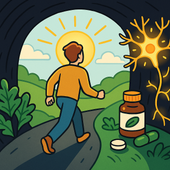
Post-Traumatic Growth and Supplements That Support It
After trauma, true healing means more than survival — it’s transformation. Learn how post-traumatic growth happens in the brain and body, and explore natural supplements like magnesium, ashwagandha, saffron, and omega-3s that support resilience, clarity, and emotional repair.
-
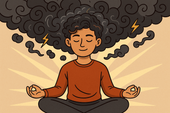
How to Regain Focus After Emotional Stress
After emotional stress, your nervous system feels frayed — your focus fades, thoughts race, and calm seems impossible. Learn how to restore balance, rebuild concentration, and retrain your brain for clarity and peace through evidence-based mind–body tools. 🌿
-
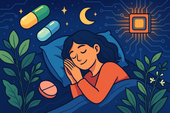
The Future of Sleep Supplements
The future of sleep supplements is here — where science meets nature. Discover how next-generation formulas use adaptogens, amino acids, and biotech innovations to support deep, restorative sleep without dependency. 🌙
-
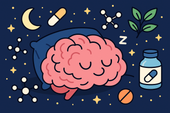
Emerging Research on Sleep and Nootropics
Can nootropics help you sleep better? Discover how compounds like L-theanine, magnesium threonate, ashwagandha, and Alpha-GPC influence neurotransmitters, circadian rhythm, and brain recovery — bridging the gap between smarter days and deeper nights. 🌙
-
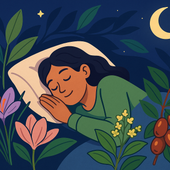
New Herbal Extracts for Deep Sleep
Discover the next generation of herbal extracts for deep sleep — from saffron and magnolia to jujube and lemon balm. Learn how these plant-based compounds calm the nervous system, balance cortisol, and promote truly restorative rest. 🌙
-
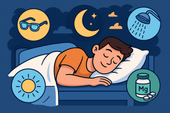
Sleep Biohacking: What Works and What Doesn’t
Biohacking your sleep can sound futuristic — from red light therapy to wearables and supplement stacks. But which hacks actually help, and which are just hype? Discover the science-backed sleep strategies that truly improve rest, recovery, and brain health. 🌙
-
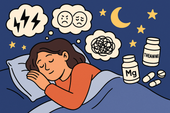
Sleep Support for People with Anxiety Disorders
💭 A restless mind can keep you up all night — thoughts spinning, heart racing, and peace feeling far away. Learn how to quiet overthinking, regulate your nervous system, and create a nightly ritual that teaches your brain to let go and rest deeply. 🌙
-
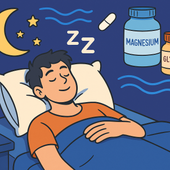
How to Fall Back Asleep After Waking Up
Waking up in the middle of the night? Learn how to fall back asleep quickly and calmly using breathing techniques, stress-reducing rituals, and natural supplements like magnesium and glycine. Restore your body’s rhythm and wake up feeling refreshed.
-
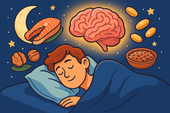
The Role of Omega-3s in Sleep Quality
-
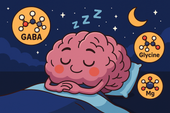
Stacking GABA and Glycine for Deeper Rest
Discover how stacking GABA and glycine can help you achieve deeper, more restorative sleep. Learn how these calming amino acids work together to relax your mind, soothe your body, and improve overall sleep quality—naturally and safely.
-

Overcoming Jet Lag with Supplements
✈️ Jet lag doesn’t have to ruin your trip! Discover how supplements like melatonin, magnesium, L-theanine, and tart cherry can help you reset your body clock faster, reduce fatigue, and recover energy naturally after long flights. 🌙
-
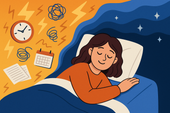
Managing Sleep During Times of Stress
Feeling wired and restless? Learn how to manage sleep during stressful times through nutrition, breathwork, and natural supplements like magnesium and L-theanine. Discover how to calm your nervous system and restore deep, peaceful rest—even when life feels overwhelming.
-
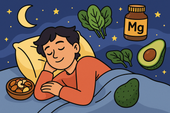
The Role of Magnesium for Night Cramps
Night cramps keeping you awake? Discover how magnesium helps relax muscles, balance electrolytes, and prevent painful spasms. Learn which forms work best, how to take them, and how to pair them with other nutrients for cramp-free, peaceful sleep.
-
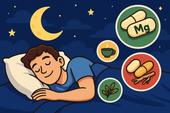
Supplements That Reduce Nighttime Awakenings
🌙 Discover science-backed supplements that help you stay asleep through the night. From magnesium and L-theanine to glycine and ashwagandha, learn how these natural compounds calm your nervous system, balance cortisol, and prevent 2 a.m. wake-ups for deeper, more restorative rest.
-
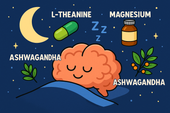
Nootropics That Promote Calm and Rest
Explore the world of calming nootropics — natural brain enhancers that promote relaxation, better focus, and deeper rest. Learn how L-Theanine, magnesium, ashwagandha, and other adaptogens help balance your nervous system, reduce stress, and support restorative sleep.
-
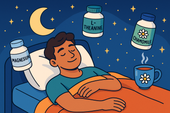
Best Natural Supplement Stack for Sleep
Discover the best natural supplement stack for deep, restorative sleep. Learn how nutrients like magnesium, L-theanine, glycine, and calming herbs such as chamomile and ashwagandha work together to relax your body, calm your mind, and improve sleep quality—naturally and safely.
-
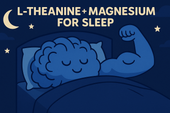
Combining L-Theanine and Magnesium for Sleep: A Calm Night, Naturally
Discover how combining L-Theanine and Magnesium can help you drift into deep, restorative sleep. Learn how this natural duo calms the mind, relaxes the body, and supports your nervous system—without grogginess the next morning.
-
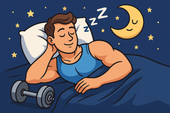
How to Sleep Better After Intense Workouts
Struggling to fall asleep after a tough workout? Learn how to optimize your post-training recovery with nutrition, hydration, and science-backed sleep strategies. Discover how to calm your nervous system, balance hormones, and wake up fully recharged for your next session.
-
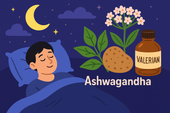
Ashwagandha and Valerian: A Bedtime Combo for Deep Rest and Emotional Reset
Discover the calming synergy of Ashwagandha and Valerian root, two natural sleep aids that help quiet the mind, ease anxiety, and promote deeper rest. Learn how this herbal duo supports the nervous system, balances stress hormones, and restores emotional peace — without next-day grogginess.
-
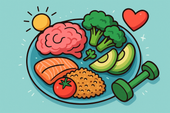
How to Create a Resilience-Boosting Diet
Discover how to build emotional and physical strength from the inside out with a resilience-boosting diet 🍎. Learn which foods stabilize your mood, how supplements like magnesium and omega-3s strengthen your stress response, and why pairing nutrition with breathwork and therapy creates lasting calm, focus, and vitality 🌿💪.
-
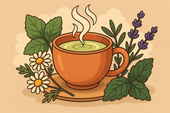
Best Teas and Herbal Blends for Calmness: Nature’s Way to Restore Inner Peace
Ashwagandha, the ancient adaptogenic herb, helps your body find balance during stress. Known as “Indian ginseng,” it supports cortisol regulation, boosts energy, and restores calm clarity. Discover how this powerful root promotes resilience, emotional balance, and steady vitality — one cup at a time. 🌸
-
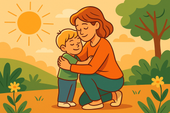
Parenting and Emotional Strength: How to Raise Children Without Losing Yourself
Empathy is the bridge that connects hearts — the quiet power to understand, feel, and support another’s emotions without judgment. Learn how empathy strengthens relationships, enhances communication, and cultivates deeper compassion in everyday life. 🌿
-
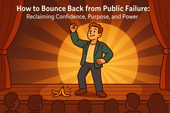
How to Bounce Back from Public Failure: Reclaiming Confidence, Purpose, and Power
Visualization is more than imagination — it’s brain training for resilience. By picturing calm, success, or healing, you activate the same neural pathways as real experience. Learn how daily visualization rewires your brain for confidence, emotional balance, and recovery from stress. ✨
-
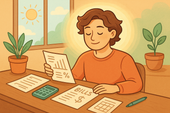
Coping with Financial Stress Through Resilience: How to Stay Grounded When Money Feels Tight
Body awareness is the foundation of emotional resilience. By tuning into your body’s signals — tension, fatigue, or calm — you learn to recognize stress before it overwhelms you. Discover how mindfulness, gentle movement, and breathwork can deepen your connection with your body and restore balance from the inside out. 🧘
-

How to Stay Positive During Chronic Illness: A Guide to Emotional Strength and Hope
Creativity is more than art — it’s a form of healing. Whether through painting, writing, music, or small acts of expression, creativity helps release emotion, calm the nervous system, and reconnect you to joy. Discover how to use creativity as a tool for emotional balance, resilience, and self-discovery. 🌿
-
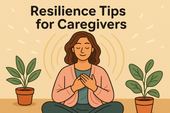
Resilience Tips for Caregivers: How to Stay Strong While Caring for Others
Joy isn’t the absence of pain — it’s the quiet strength to find light even in challenging times. Cultivating joy through small daily moments restores balance, releases stress, and reminds you of life’s beauty. Learn how to reconnect with authentic happiness, rebuild emotional energy, and nurture your nervous system through gratitude, presence, and play. 🌿
-
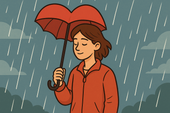
Building Resilience After a Breakup: How to Heal, Rebuild, and Rise Stronger
Social connection is one of the strongest predictors of emotional resilience. During difficult times, genuine relationships act as anchors — calming the nervous system, reducing stress hormones, and helping you regain perspective. Learn how cultivating real human connection can strengthen your mind, heart, and overall well-being. 🌿
-
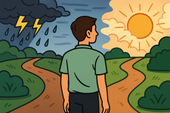
How to Stay Emotionally Strong During Job Loss
Your emotions are powered by brain chemistry — a delicate balance of neurotransmitters like serotonin, dopamine, and cortisol. When these chemicals work in harmony, you feel calm, focused, and resilient. Learn how daily habits, nutrition, and mindfulness can support your brain chemistry and boost emotional well-being naturally. 🌿
-
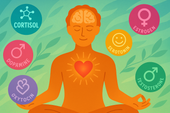
The Role of Hormones in Emotional Stability: How Your Chemistry Shapes Your Calm
Hormones shape more than your body — they shape your emotions, resilience, and sense of calm. From cortisol to serotonin, these chemical messengers influence how you react to stress, connect with others, and recover from challenges. Learn how to balance your hormones naturally to build lasting emotional stability and harmony within. 💫
-
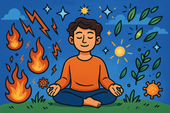
Mitochondria and Emotional Energy: The Cellular Power Behind Your Mood
Breathwork is one of the most powerful tools for emotional regulation and cellular balance. Through intentional breathing, you can calm your nervous system, increase oxygen flow to the brain, and even support mitochondrial energy. Learn how conscious breathing connects body and mind — transforming stress into presence and emotional strength. 🌿
-
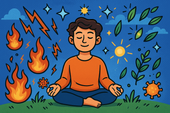
Inflammation and Its Impact on Mood Resilience: The Silent Link Between Body and Mind
Inflammation doesn’t just affect the body — it impacts the mind. Chronic inflammation alters brain chemistry, depletes serotonin, and makes emotional recovery harder. Learn how calming inflammation through nutrition, mindfulness, and sleep can restore balance, resilience, and a renewed sense of emotional strength. 💫
-
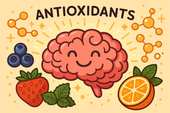
How Antioxidants Protect Emotional Well-being: The Hidden Link Between Oxidative Stress and Mental Health
Antioxidants do more than protect your body — they defend your mind. By neutralizing oxidative stress, antioxidants support serotonin, dopamine, and brain energy pathways that keep you calm, focused, and emotionally balanced. Discover how foods like berries, green tea, and dark chocolate nourish your brain, boost mood, and strengthen resilience from the inside out. 🌿✨
-
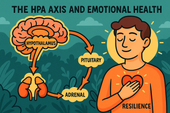
The HPA Axis and Emotional Health: The Hidden Bridge Between Stress and Mind
Neuroplasticity — the brain’s ability to rewire and adapt — is the foundation of emotional healing and resilience. When you face stress, trauma, or change, your neural pathways can reshape themselves to support new patterns of calm, focus, and self-awareness. Learn how daily practices like mindfulness, therapy, and breathwork strengthen neuroplasticity to transform emotional pain into personal growth. 🌸
-
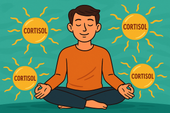
Why Cortisol Control Is Key to Resilience: Mastering Stress to Build Emotional Strength
Controlling cortisol — the body’s main stress hormone — is the secret to lasting resilience. When cortisol levels stay balanced, your mind becomes clearer, emotions steadier, and energy more sustainable. Learn how breathwork, mindset shifts, adaptogens, and daily rhythms can help you calm your stress response and build true inner strength. 🌞💪
-
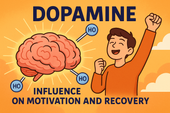
Dopamine’s Influence on Motivation and Recovery: Reigniting Drive and Balance
Healthy relationships are the foundation of emotional balance and resilience. Whether romantic, familial, or platonic, genuine connection releases dopamine, serotonin, and oxytocin — the brain’s “bonding trio” — helping us feel secure, motivated, and seen. Learn how trust, empathy, and communication not only strengthen your connections but also reshape your nervous system for deeper emotional well-being. 🌿🤝
-
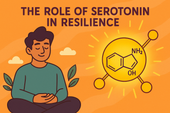
The Role of Serotonin in Resilience: How This “Mood Molecule” Shapes Emotional Strength
Serotonin — often called the “resilience molecule” — plays a vital role in how we handle stress, regulate mood, and recover from emotional challenges. Beyond happiness, this powerful neurotransmitter helps balance the gut-brain axis, stabilize the nervous system, and support emotional flexibility. Learn how nutrition, sunlight, mindfulness, and adaptogens can naturally boost serotonin and strengthen your emotional resilience. 🌞🧠
-
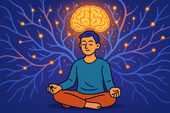
How Neuroplasticity Supports Emotional Growth: Rewiring the Brain for Resilience
Neuroplasticity is the brain’s built-in power to grow, adapt, and heal — and it’s the foundation of emotional transformation. Every mindful breath, compassionate act, or reframed thought strengthens new neural pathways that support resilience and self-awareness. Learn how your brain rewires through daily habits, helping you turn emotional challenges into opportunities for growth and calm. 🌿
-
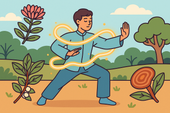
Tai Chi and Adaptogens for Mind-Body Balance: The Art of Harmonizing Energy and Resilience
Alchemy isn’t just an ancient science — it’s a timeless symbol of transformation and inner balance. By blending the physical and spiritual, alchemy teaches us that change begins from within. Just as metals are refined into gold, we too can transmute emotional pain, stress, and chaos into clarity and strength through mindful practice and self-awareness. 🌙✨
-
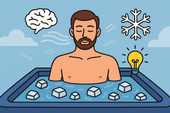
Cold Therapy and Emotional Control: Training the Mind Through the Body
Cold therapy isn’t just for athletes — it’s a tool for emotional mastery. By exposing your body to controlled cold, you train your nervous system to stay calm under stress, improving focus, mood, and resilience. This article explores the science of cold exposure, its impact on hormones and the vagus nerve, and how ice baths and cold showers can help you build emotional control, one breath at a time. 🧊🧘♂️
-
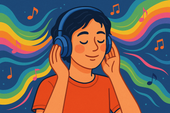
How Music Influences Emotional Recovery: The Healing Soundtrack of the Mind
Neuroplasticity — the brain’s ability to rewire and heal itself — is at the heart of emotional recovery. Through mindful habits, music, therapy, and consistent mental stimulation, your brain can form new connections that support resilience and well-being. Discover how neuroplasticity turns pain into growth, helping you rebuild balance, focus, and emotional strength. 🌿
-
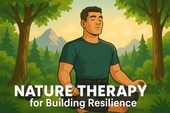
Nature Therapy for Building Resilience: Reconnecting With the Healing Power of the Earth
Nature therapy helps rebuild emotional resilience by reconnecting you with the healing rhythms of the Earth. From forest walks to sunlight exposure, nature restores balance to your nervous system, lowers stress hormones, and teaches emotional adaptability. Learn how spending time outdoors can enhance mental clarity, calm anxiety, and awaken your natural capacity to heal. 🌞
-
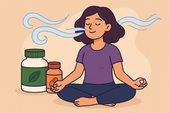
Breathwork Techniques That Pair with Supplements: The Ultimate Synergy for Stress Relief and Mental Clarity
Breathwork and supplements create a powerful mind-body synergy for stress relief, focus, and energy. By combining intentional breathing with adaptogens, nootropics, and calming nutrients, you can naturally regulate cortisol, sharpen mental clarity, and boost emotional balance. This guide explores the best breathwork techniques and supplement pairings to help you feel centered, calm, and energized from the inside out. 🌿

















































